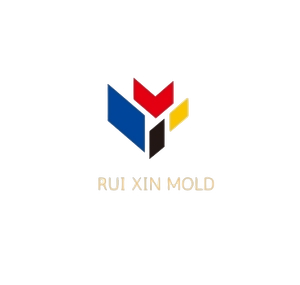Recent Posts
Tags
报错: 未找到这个表单
Complete Lifter Design in Plastic Molding
A comprehensive guide to designing lifters for plastic injection molds, covering key concepts like undercuts, draft angles, and lifter angles. Learn how to optimize lifter design for efficient and reliable part ejection.

automotive injection mold lifters
An automotive injection mold lifter is a mechanical component that helps eject molded parts from the mold. It's a crucial part of the injection molding process, and its primary function is to create undercuts, which are features that prevent the part from being ejected straight from the mold
Table of Contents:

1. Introduction to Lifter Design in Plastic Molding
Lifters are critical components in plastic injection molding, responsible for the smooth and efficient removal of the molded part from the mold cavity. The design of these lifters directly impacts the overall success of the molding process, influencing factors like cycle time, part quality, and production efficiency. This guide will delve into the key principles of lifter design, exploring the challenges posed by undercuts, the importance of draft angles, and the role of lifter angles in achieving successful part ejection.
2. Understanding Undercuts and Draft Angles
Undercuts: An undercut is a feature in a molded part that prevents its direct removal from the mold cavity. It creates a “locking” effect, making it impossible to simply lift the part straight out. Common examples of undercuts include holes, ribs, and bosses that extend beyond the mold parting line.
Draft Angles: To overcome undercuts, draft angles are incorporated into the part design. These are slight tapers applied to the sides of the part, facilitating its release from the mold walls. A sufficient draft angle minimizes friction during ejection, reducing the risk of part sticking or damage.
3. The Role of Lifter Angles in Ejection
While draft angles help, undercuts still require specialized ejection mechanisms. This is where lifter angles come into play. By incorporating an angle into the lifter’s movement, the part can be lifted slightly, disengaging the undercut before sliding out of the mold.
Calculating Lifter Angles: The optimal lifter angle depends on the depth of the undercut and the desired ejection force. Careful calculations and simulations are necessary to determine the appropriate angle to ensure smooth and efficient ejection without interfering with other mold components.

What is a lifter in an injection mold?
The lifter is mainly used to form the internal undercuts of an injection molded plastic part, and at the same time it also offers ejection function. Considerations in lifter design include selecting abrasion-resistant and durable materials to withstand pressures and ensure operational efficiency
4. Designing Lifters for Complex Parts with Multiple Undercuts
For parts with multiple undercuts, the design process becomes more intricate.
- Analyzing Part Geometry: A thorough analysis of the part’s geometry is crucial. Identify all undercuts, their locations, depths, and orientations.
- Selecting the Right Lifter Type: Choose the most suitable lifter type based on the complexity of the undercuts. Options include angled pushers, cam-action lifters, and more advanced mechanisms.
- Designing Lifter Paths: Determine the optimal movement path for each lifter to ensure it reaches the desired ejection point and overcomes the corresponding undercut.
- Supporting Structures: Ensure adequate support for the lifters during the ejection process to prevent bending or deformation.
5. Materials for Lifter Construction
The choice of material for lifters significantly impacts their performance and durability. Common materials include:
Steel: Offers high strength and wear resistance, suitable for high-temperature applications.
Stainless Steel: Corrosion-resistant, ideal for applications involving corrosive materials.
Aluminum: Lightweight and offers good thermal conductivity.
Plastics: Cost-effective and easy to machine, suitable for certain applications.
The ideal material depends on factors like mold operating temperature, chemical compatibility, wear resistance, and cost.
6. Advancements in Lifter Technology
Advancements in lifter technology have led to more efficient and reliable ejection systems.
- Spring-Loaded Lifters: Utilize springs to provide consistent upward force, ensuring reliable ejection.
- Hydraulic Lifters: Employ hydraulic cylinders for powerful and precise ejection, suitable for large or heavy parts.
- Pneumatic Lifters: Utilize compressed air for fast and responsive ejection.
- Robotic Ejection Systems: Offer high flexibility and adaptability, capable of handling complex part geometries.
These advanced technologies offer significant advantages over traditional designs but also come with increased complexity and cost.
7. Conclusion
Effective lifter design is crucial for successful plastic injection molding. By understanding the principles of undercuts, draft angles, and lifter angles, mold designers can optimize the ejection process, improve part quality, and increase production efficiency. Continuous advancements in lifter technology will continue to drive innovation in the field.

A comprehensive guide to designing lifters for plastic injection molds, covering key concepts like undercuts, draft angles, and lifter angles. Learn how to optimize lifter design for efficient and reliable part ejection.
